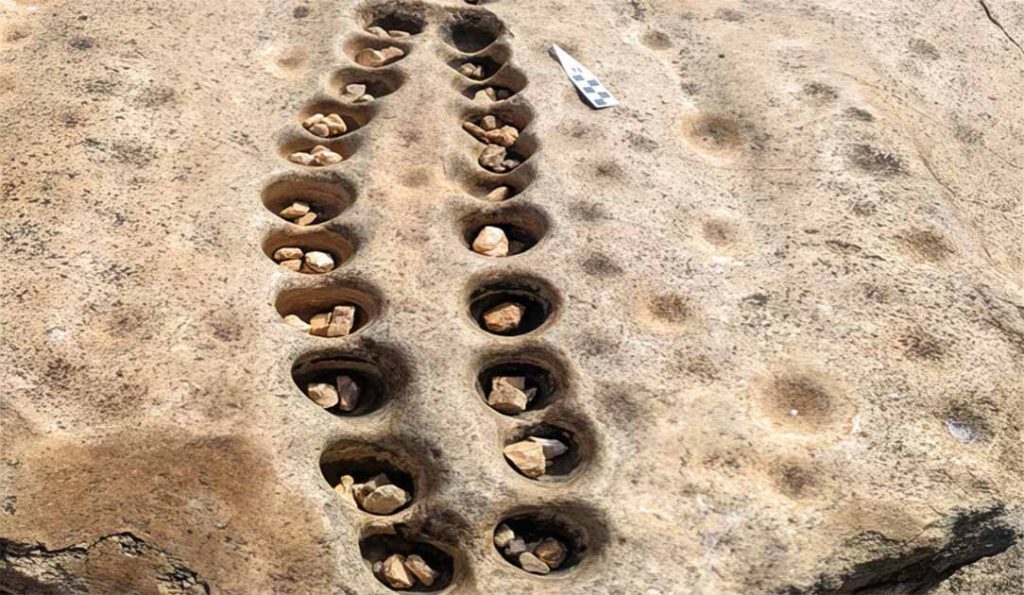In a fascinating blend of academic prowess and indigenous insight, Veronica Waweru from Yale University has stumbled upon what appears to be an ancient repository of Mancala game boards in the heart of central Kenya. This groundbreaking discovery, nestled within the Lewa Wildlife Conservancy, not only sheds light on the enduring allure of one of humanity’s oldest pastimes but also underscores the significance of collaboration between scholarly endeavors and local communities in unraveling archaeological enigmas.
Unearthing a Remarkable Find Through Local Tip-Off

Initially embarking on her expedition to probe the looting of prehistoric artifacts, Veronica Waweru, a Yale archaeologist specializing in Kenyan fieldwork, found herself captivated by an unexpected turn of events. Prompted by a local informant, her attention swiftly shifted towards a captivating historical narrative—an ancient gathering place where early inhabitants convened to engage in the strategic intricacies of Mancala, a game deeply ingrained in cultural heritage.
During her exploration, Waweru, accompanied by the knowledgeable staff of Lewa, stumbled upon a series of shallow depressions etched into a rocky outcrop. These recesses, displaying varying depths and weathered imprints, hinted at a bygone era of Mancala gameplay—a testament to the enduring appeal of this timeless board game.
Exploring the Ancient History of Mancala

Mancala stands as one of the earliest documented two-player board games, believed to have originated in ancient Africa around 700 AD, with traces found in regions like Eritrea and Ethiopia. While its precise origins remain shrouded in the mists of time, archaeological evidence suggests its presence in diverse cultures across millennia.
Noteworthy discoveries, such as rows of pits resembling Mancala boards in Iran and Jordan dating back to 6300 BC and 5900 BC respectively, hint at the game’s ancient lineage. Additionally, the presence of similar structures in Egyptian temples and Roman artifacts further attests to Mancala’s widespread influence, propagated through trade routes and cultural exchanges.
Delving into the Antiquity of Mancala
Veronica Waweru’s recent findings offer a tantalizing glimpse into the deep-rooted history of Mancala gameplay in the region. While the age of the discovered boards remains challenging to ascertain due to their integration into 400-million-year-old rock formations, adjacent burial sites provide potential avenues for further investigation.
By leveraging modern techniques, such as DNA analysis from organic remnants found in proximity to the game boards, Waweru and her team aim to unravel the mysteries surrounding the ancient players of Mancala and their connection to contemporary inhabitants.
Embracing Local Knowledge in Archaeology
Central to Waweru’s approach to archaeology is a commitment to inclusivity and the recognition of local expertise. By empowering community members as active participants in the research process, she has facilitated groundbreaking discoveries, ranging from fossils to ancient artifacts, showcasing the invaluable synergy between professional scholarship and indigenous insights.
The revelation of potential Mancala boards, coupled with evidence of burial customs and daily life activities, paints a vivid portrait of a region steeped in historical richness and human activity.


